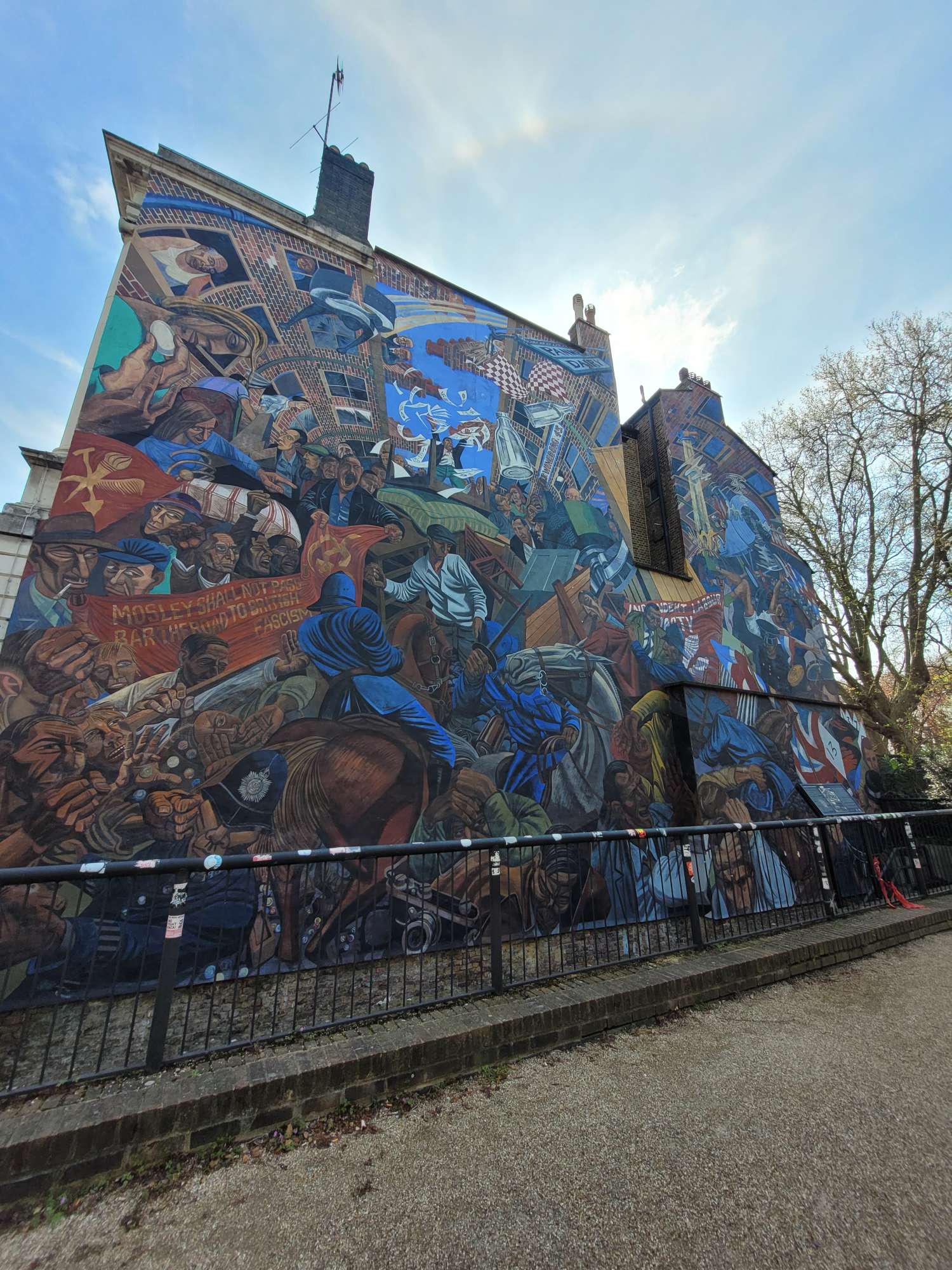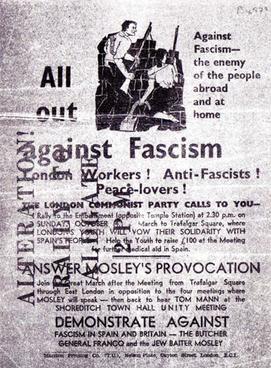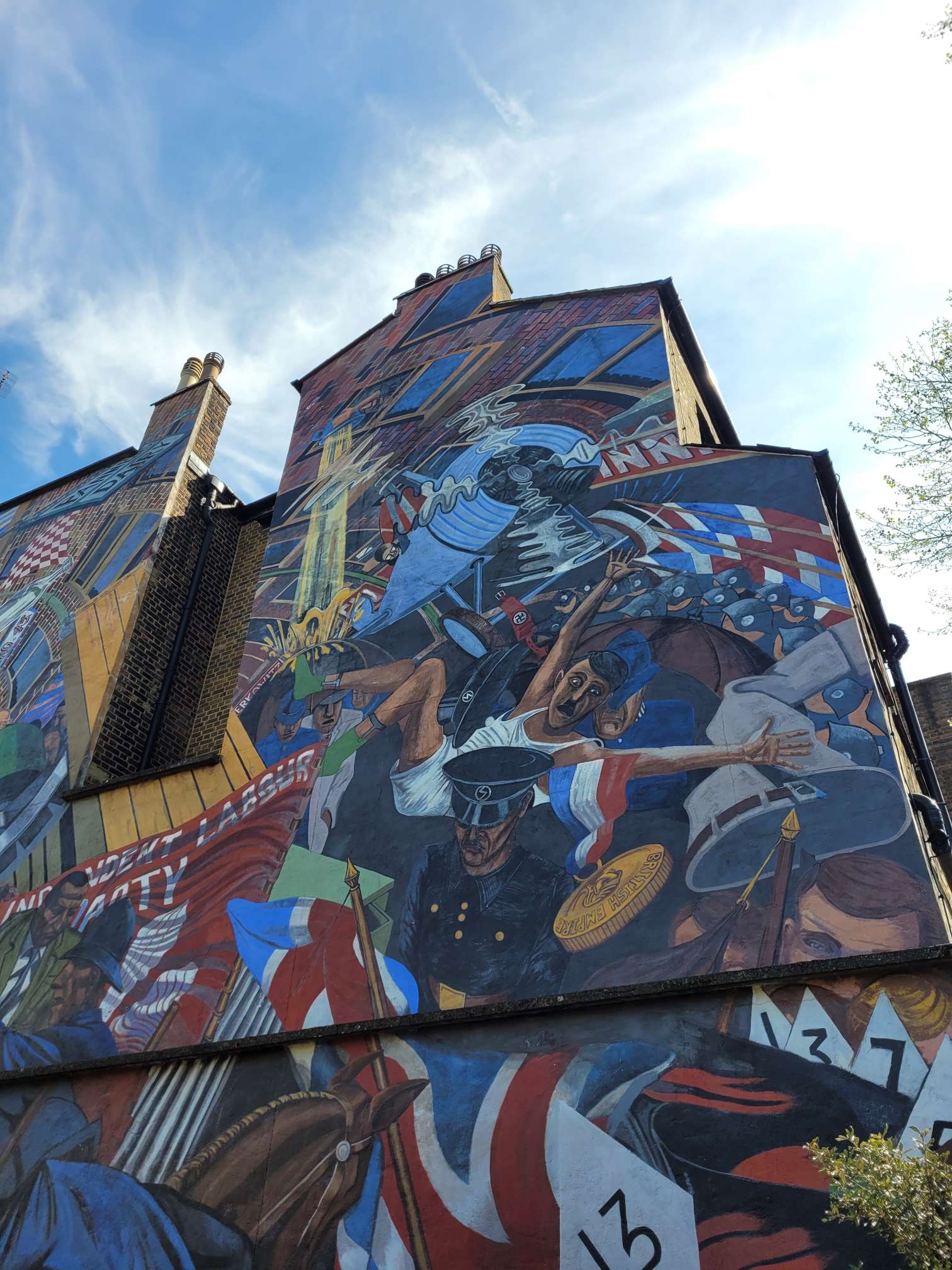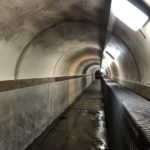The Battle of Cable Street is the name given to the demonstrations and clashes that took place at several locations in the East End of London on Sunday 4th October 1936.
These events are commemorated in a mural on the side St George’s Hall beside the entrance to St George’s Gardens.

About the march
The British Union of Fascists had advertised a march to take place on Sunday 4th October 1936. This march was to be held in the East End of London, where there was a large Jewish population. It was planned that the march would start at Tower Hill and then split into four groups. Each group would then march onto Limehouse, Bow, Bethnal Green and Shoreditch for open air gatherings attended by British Union of Fascists leader, Oswald Mosely.
Opposition
The Jewish People’s Council gathered 100,000 signatures, including the Mayors of the five East London Boroughs (Hackney, Shoreditch, Stepney, Bethnal Green and Poplar)
The march was given the go ahead and groups including local trade unionists, British Jews, socialist groups and many more led an anti-fascist counter-demonstration.

What happened at Cable Street?
Anti facism protesters built barricades Cable Street and its side streets. The Metropolitan Police attempted to remove the barricades and were resisted by locals and march attendees. Fearing more disruption, the Metropolitan Police advised Oswald Mosely and his supporters to leave the area and continue their gathering within Hyde Park.

Commemoration
The mural you see on the side of St George’s Town Hall was painted in 1983, and restored in 2016. There is also a red plaque in Dock Street.

Where
St. Georges Town Hall, 236 Cable Street, London E1 0BL
Transport
Nearby you will find – Shadwell DLR and Shadwell Overground




